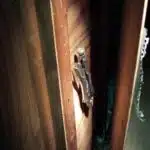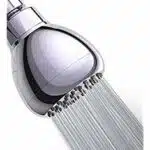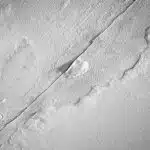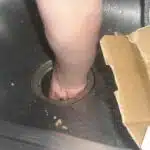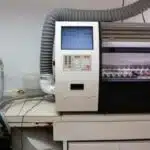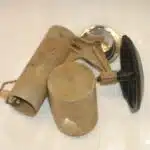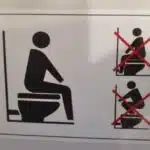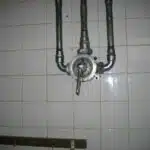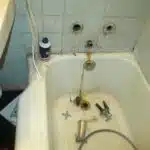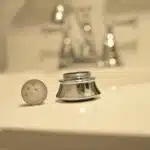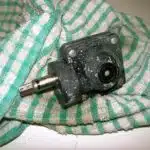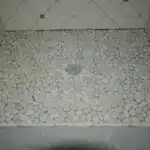As a plumbing technician, it is essential to identify the main sewer clean-out in a house. The sewer clean-out provides access to the main sewer line, allowing for easy maintenance and repair. However, locating the main sewer clean-out can be challenging for homeowners who are not familiar with plumbing systems.
In this article, we will discuss how to identify the main sewer clean-out in your house. We will provide practical tips and insights to help you locate this crucial component of your plumbing system. By understanding how to identify the main sewer clean-out, you can ensure that your home’s plumbing system runs smoothly and avoid costly repairs down the road.
Understanding Your Plumbing System
As a plumbing technician, one of the most common issues that I encounter is the lack of plumbing maintenance in households. While some may opt to hire professionals for minor repairs or installations, there are several DIY plumbing tips that can save you from potentially costly damages. Knowing the basics of your home’s plumbing system is key to avoiding major issues and ensuring its longevity.
The first step in understanding your plumbing system is identifying the location of all water shut-off valves and gas lines. This information is crucial in case of emergencies, such as leaks or gas odors. Familiarizing yourself with the layout of pipes and fixtures can also help you pinpoint potential problems before they escalate. Additionally, being aware of which materials were used in your home’s construction can provide insight into any specific maintenance needs.
Properly maintaining your plumbing system not only saves money on repairs but also promotes a healthier living environment. Neglecting regular upkeep can lead to clogs, leaks, or even pipe bursts that could damage your property and harm your family’s health. In the following section, we will delve into the importance of a main sewer clean-out and how it plays a vital role in keeping your home’s plumbing system running smoothly.
The Importance Of A Main Sewer Clean-Out
Understanding your plumbing system is essential to ensure that it remains in good working condition. One crucial component of your plumbing system is the main sewer clean-out. This access point allows you or a professional plumber to maintain and repair your sewer line, which can be a costly and messy proposition without proper access.
The importance of a main sewer clean-out cannot be overstated. Without this access point, clearing clogs or repairing damage to your sewer line would require excavation of the entire pipe. Additionally, regular maintenance of the line through hydro jetting or other methods would be impossible without access to the clean-out.
Maintenance of your main sewer clean-out is critical to ensuring that it functions properly when needed. Regular inspections by a professional plumber can identify any potential issues with the clean-out and address them before they become problematic. Keeping the area around the clean-out clear of debris and obstructions also ensures easy access when needed.
So, what exactly is a main sewer clean-out? Simply put, it is an access point to your home’s main sewer line that allows for easy maintenance and repair without requiring excavation of the entire pipe. Understanding its importance and maintaining it regularly will help you avoid costly repairs and inconvenience in the future.
What Is A Main Sewer Clean-Out?
A main sewer clean-out is an essential component of a plumbing system in residential and commercial buildings. It is usually a large-diameter pipe that provides access to the main sewer line for maintenance and cleaning purposes. The location of the main sewer clean-out varies depending on the design and layout of the building, but it is typically found near the foundation or outside walls.
Main sewer clean-out maintenance is critical to ensure that your plumbing system runs smoothly. Regular inspection and cleaning of this component can prevent backups, clogs, and other problems that may cause significant damage to your property. During an inspection, a plumbing technician will check for any signs of blockages or damage that may require repair or replacement.
The importance of clean out inspection cannot be overstated as it helps identify issues before they become major problems. By investing in regular maintenance, you can avoid costly repairs and extend the life of your plumbing system. If you notice any signs of water backing up or slow draining, it may be time to schedule an inspection with a trusted plumber who can locate the main sewer clean-out and perform necessary maintenance.
As we have seen, maintaining your main sewer clean-out is crucial for proper functioning of your plumbing system. In the next section, we will discuss types of main sewer clean-outs you may encounter during maintenance inspections. Understanding different types will help you identify which type exists in your home or business space and how best to maintain them for optimal performance.
Types Of Main Sewer Clean-Outs
Main sewer clean-outs are an essential part of any plumbing system, as they allow technicians to access the main sewer line for maintenance and repair. There are three primary types of clean-outs: the capped clean-out, the threaded plug clean-out, and the riser-style clean-out. Each type has its unique features, benefits, and drawbacks.
The capped clean-out is the most basic type of main sewer clean-out. It is typically a PVC pipe with a removable cap that provides access to the main sewer line. Capped clean-outs are easy to install and maintain, making them a popular choice among homeowners. However, they can be difficult to locate in emergencies due to their low profile.
Threaded plug clean-outs are similar to capped clean-outs but have a threaded plug instead of a cap. The plug can be unscrewed for easier access to the main sewer line. Threaded plug clean-outs tend to be more visible than capped clean-outs, which can make them easier to locate in emergencies. However, they are more expensive than capped clean-outs and require additional parts for installation.
Clean-out maintenance and repair costs vary by type and depend on several factors such as location, accessibility, and severity of damage. Capped clean-outs tend to be the least expensive option for both maintenance and repairs due to their simple design. Threaded plug clean-outs require additional parts for installation, making them slightly more expensive than capped clean-outs. Riser-style clean-outs tend to be the most expensive option since they require excavation for installation or repair.
In preparation for locating your main sewer’s primary ‘clean out,’ it is necessary first to understand how your plumbing system works with respect to this feature in your house’s drainage system before taking action towards finding it yourself or calling a professional plumber who will help you locate it quickly without much stress involved in searching around blindly.
Locating The Main Sewer Clean-Out
- Sewer clean-outs are plumbing components that provide access to a home’s sewer line for maintenance and repair.
- The main sewer clean-out is the access point for the main sewer line, which connects to all other plumbing fixtures.
- Identifying the main sewer clean-out typically requires inspecting the home’s exterior walls and foundation for a distinct pipe or access plug.
- Once located, the access plug can be removed and the main sewer clean-out accessed.
- It is important to ensure proper protection is worn when accessing the main sewer clean-out, including eye protection and rubber gloves.
- To minimize the risk of any potential health issues, proper ventilation should be provided when accessing the main sewer clean-out.
Understanding Sewer Clean-Outs
An essential component of any plumbing system is the sewer clean-out. It serves as a point of access to the main sewer line, allowing for easy maintenance and inspection. Sewer clean-out maintenance is crucial in preventing clogs and backups that could result in costly repairs or health hazards.
While it’s possible to perform a DIY clean out inspection, it’s highly recommended to leave this task to professional plumbers. They possess the necessary tools and expertise to safely access and inspect the sewer clean-out without causing further damage or harm. Moreover, they can identify potential issues early on and provide recommendations for preventive measures.
In summary, understanding sewer clean-outs is vital in locating the main sewer clean-out in your house. It’s important to prioritize regular sewer clean-out maintenance by hiring professional plumbers who can perform thorough inspections and prevent disastrous clogs or backups from occurring. Don’t wait until it’s too late; keep your plumbing system functioning smoothly by scheduling routine check-ups today!
Identifying The Main Sewer Clean-Out
When it comes to locating the main sewer clean-out, finding access can be a bit tricky. However, it’s essential to locate it as soon as possible to ensure proper clean-out maintenance. Identifying the main sewer clean-out requires some knowledge of your home’s plumbing system. Usually, it’s located outside your house near the foundation, but sometimes it might be inside your basement or crawl space.
If you’re having difficulty locating the main sewer clean-out in your home, don’t hesitate to call a professional plumber for assistance. They can help you identify its exact location and provide recommendations on how to maintain it properly. A professional plumber has the necessary tools and expertise to make sure that everything is working correctly without causing further damage or harm.
Regular inspection of the main sewer clean-out is crucial in preventing clogs and backups from occurring that could lead to costly repairs or health hazards. So if you haven’t had your sewer line inspected recently, now is the time to do so! Don’t wait until disaster strikes before taking action – schedule a routine check-up today with a licensed plumber who can ensure that your plumbing system is functioning smoothly and efficiently all year round!
Accessing The Main Sewer Clean-Out
Now that you’ve located the main sewer clean-out, it’s time to learn how to access it properly. Accessing the clean-out is essential in case of clogs or backups that require cleaning out the sewer line. While some clean-outs are easy to access, others may be more challenging, depending on their location.
To access the main sewer clean-out, you’ll need a few tools, including a wrench or pliers and a bucket or container to catch any water or debris. Before accessing the clean-out, it’s crucial to turn off all water sources in your home to prevent any unwanted water flow into the area. Once you’re ready, use your wrench or pliers to remove the cap from the clean-out pipe carefully.
Make sure to wear protective gear like gloves and goggles before accessing the main sewer clean-out since wastewater can be hazardous if exposed to your skin or eyes. Additionally, keep children and pets away from the area while cleaning out your sewer line. If you’re not comfortable accessing the clean-out yourself, don’t hesitate to call a licensed plumber for assistance. They have the necessary expertise and equipment to ensure safe and efficient cleaning of your sewer line.
Exterior Clean-Outs
As a plumbing technician, I understand the importance of maintaining the exterior clean-outs of your home’s plumbing system. These access points provide an essential pathway for any debris or blockages to exit the sewer line. Neglecting these clean-outs can lead to costly repairs and potential damage to your property.
Inspecting exterior clean-outs should be a routine part of your home maintenance schedule. It is recommended to have them checked annually by a licensed plumber to ensure they are in good condition and functioning correctly. During an inspection, the plumber will check for any signs of wear and tear, such as cracks or corrosion, that could compromise the integrity of the clean-out.
Maintaining exterior clean-outs involves keeping them clear of debris and obstructions. This can be achieved by periodically removing any grass, leaves, or other debris that may have accumulated around the area. Additionally, avoid planting trees or shrubs near the clean-out as their roots can grow into and clog the sewer line.
- Four tips for maintaining exterior clean-outs:
- Keep the area around the clean-out clear of debris.
- Avoid planting trees or shrubs near the clean-out.
- Schedule annual inspections with a licensed plumber.
- Address any issues promptly to prevent further damage.
Ensuring your exterior clean-outs are functioning correctly is crucial in preventing potential plumbing disasters. By following these tips and regularly inspecting and maintaining your exterior clean-outs, you can save yourself from costly repairs down the road. In our next section, we will discuss how to identify and maintain interior clean-outs within your home’s plumbing system.
Interior Clean-Outs
- The main sewer clean-out located within a house is typically found near the foundation wall closest to the street.
- An interior clean-out can be attempted by a homeowner, however the use of professional plumbing services is advised to ensure correct installation and proper maintenance.
- Professional plumbing services are equipped with the necessary tools to quickly and efficiently identify and access the main sewer clean-out.
- Professional plumbing services can also provide a comprehensive inspection of the internal drainage system to determine if any repairs are required.
- A DIY clean-out typically involves a few basic tools, such as a wrench, pipe wrench, and a snake, to access and remove any clogs from the main sewer clean-out.
- Professional clean-outs are typically more involved, requiring additional specialized tools and techniques to safely and effectively remove any clogs and debris.
Location Identification
The main sewer clean-out in your house is an essential component of your plumbing system. As a plumbing technician, I cannot stress enough the importance of identifying its location. Identifying the main sewer clean-out can save you from potential headaches and expenses down the line.
Knowing where your main sewer clean-out is located provides several benefits. Firstly, it allows for easy access when there is a clog or blockage in your plumbing system. This access point allows plumbers to clear out any obstructions efficiently. Secondly, identifying the main sewer clean-out can save time and money by preventing unnecessary digging in case of repairs or maintenance issues with the sewage system. Lastly, regular checks on this access point can help detect any potential problems that may arise within your plumbing system.
In conclusion, knowing where the main sewer clean-out is located in your house has significant benefits and should not be overlooked. As a plumbing technician, I recommend conducting regular checks on this access point to ensure that it remains accessible and functional at all times. By doing so, you will have peace of mind, knowing that you are prepared for any unforeseen plumbing emergencies that may occur.
Diy Clean-Out
When it comes to plumbing issues, homeowners often try to save money by taking on DIY projects instead of hiring a professional. While some plumbing tasks can be tackled by the average homeowner, it’s important to know when you should call in a professional plumber. One area where homeowners may attempt a DIY solution is with their interior clean-out. However, before attempting any DIY work on your main sewer clean-out, it’s essential to understand the potential risks and limitations.
One of the first things to consider before attempting any DIY work on your main sewer clean-out is whether you have the necessary tools and equipment. While there are many DIY tools available for plumbing work, not all of them are suitable for every job. For example, if your main sewer line is clogged with tree roots or other debris, you may need specialized equipment that isn’t readily available at your local hardware store. Additionally, some problems may require professional expertise and experience to troubleshoot effectively.
If you do decide to tackle a main sewer clean-out as a DIY project, there are some troubleshooting tips you should keep in mind. Firstly, always turn off the water supply before attempting any work on your plumbing system. Secondly, use caution when using any tools or equipment near your main sewer line as they can cause damage if not used correctly. Lastly, if you encounter any problems with your plumbing system that are beyond your abilities or knowledge, don’t hesitate to call in a professional plumber for assistance. By following these guidelines and knowing when to call in an expert, homeowners can save time and money while ensuring their plumbing system remains functional and efficient.
Professional Clean-Out
When it comes to plumbing issues, homeowners should always weigh the pros and cons of attempting a DIY solution versus hiring a professional plumber. One area where this decision may come into play is with interior clean-outs, particularly when it comes to the main sewer line. While some homeowners may feel confident in tackling this task on their own, it’s important to understand the potential risks and limitations before doing so.
One option for homeowners who are not comfortable attempting a DIY main sewer clean-out is hiring a professional plumber. There are several benefits to this approach. Firstly, plumbers have specialized equipment and expertise that can help them identify and troubleshoot even the most complex plumbing problems. Additionally, they have access to materials and replacement parts that may be difficult for the average homeowner to obtain. Finally, by hiring a professional plumber, homeowners can ensure that their plumbing system is being serviced safely and effectively.
Of course, there are also some potential drawbacks to hiring a professional plumber for a main sewer clean-out. For one thing, it can be more expensive than attempting the task as a DIY project. Additionally, some homeowners may feel uncomfortable with strangers working in their home or handling their plumbing system. Ultimately, the decision of whether to attempt a main sewer clean-out as a DIY project or hire a professional plumber will depend on each homeowner’s individual circumstances and comfort level with plumbing work.
Checking For Access Points
Moving on from interior clean-outs, the next step involves checking for access points. Access point identification is crucial in ensuring that all plumbing systems are properly maintained and inspected regularly. In this section, we will explore the process of identifying clean-out accessibility in your home.
The first thing to look for when identifying clean-out accessibility is the location of your main sewer line. This can typically be found outside your house near the foundation or basement wall. Once you have located your main sewer line, you should be able to identify where your main sewer clean-out is located inside your home.
The second thing to consider when identifying clean-out accessibility is the type of cover that is used to seal off the access point. Various types of covers are available for different types of clean-outs, including screw-on covers, snap-on covers, and threaded covers. Identifying which type of cover is used on your clean-out will help determine how easy it will be to access and maintain in the future.
Identifying Clean-Out Covers
As the old adage goes, “out of sight, out of mind.” This couldn’t be more true when it comes to identifying clean-out covers in your home. These covers can often go unnoticed and neglected, leading to costly repairs down the line. As a plumbing technician, it’s important to educate homeowners on how to properly identify and maintain their clean-out covers.
When it comes to materials used for clean-out covers, there are a few common options. The most popular materials include cast iron, PVC plastic, and brass. Cast iron is known for its durability and strength, while PVC plastic is a more affordable option that is easy to install. Brass is another durable material that can withstand harsh weather conditions.
DIY clean-out cover maintenance is possible with some basic tools and knowledge. It’s important to regularly inspect your covers for any signs of damage or wear and tear. If you notice any cracks or leaks in the cover, it’s best to replace it as soon as possible. Additionally, make sure the cover is securely fastened in place and free of debris such as leaves or dirt.
Moving forward with identifying the main sewer clean-out in your house requires proper tools for locating them. As a plumbing technician, having access to equipment such as pipe locators and metal detectors can make this process much easier. In the next section, we will discuss these tools in detail and how they can aid in identifying the main sewer clean-out within your home.
Tools For Locating The Clean-Out
To detect the main sewer clean-out in your house, you need to have a basic understanding of your plumbing system. The clean-out is an access point that allows you to clear any clogs or debris in your sewer line. It is usually located outside your home, near the foundation, and close to the main sewer line.
One way to locate the clean-out is by looking for a capped pipe protruding from the ground. It may be made of PVC or cast iron and is typically 3-4 inches in diameter. If you cannot find it easily, try checking near areas where your plumbing fixtures are located, such as under sinks or near toilets. In some cases, it may be concealed behind a wall or underground.
Proper clean-out detection and sewer line maintenance are crucial for preventing backup and other plumbing issues. Regular cleaning and inspection can help identify potential problems before they become major issues. In addition to routine maintenance, it’s essential to avoid flushing non-biodegradable items down the toilet or sink drains and using chemical drain cleaners that can damage your pipes over time.
In case you cannot locate the main sewer clean-out on your own or encounter any issues during maintenance, calling a professional plumber is always recommended. A licensed technician has specialized tools and equipment that can accurately diagnose and fix any problems with your sewer line quickly. Do not hesitate to seek their assistance for reliable solutions and peace of mind.
Calling A Professional
Like any other household system, sewer lines can experience problems, which can lead to a range of unpleasant issues such as clogs, backups, and even leaks. When it comes to fixing these issues, homeowners might consider DIY alternatives. While these options may seem cost-effective at first glance, they can often result in more damage being done and ultimately costing more money in the long run.
Hiring professionals is the best approach when it comes to dealing with sewer line problems. Experienced plumbing technicians have the necessary knowledge and equipment to diagnose and fix sewer line issues quickly and efficiently. Additionally, they can provide valuable insights on how to maintain your main sewer clean-out properly and avoid future problems.
While hiring professionals may come at a higher cost than DIY alternatives, it’s essential to keep in mind that investing in proper maintenance for your main sewer clean-out can save you money in the long term. Additionally, professional plumbers offer warranties on their workmanship, which provides peace of mind knowing that any further issues will be addressed promptly without additional costs.
Maintaining Your Main Sewer Clean-Out
After calling a professional to inspect your plumbing system, it is important to take note of the location of your main sewer clean-out. This access point is crucial for any clean out maintenance and blockage prevention in your plumbing system. The main sewer clean-out is usually located outside the house, near the foundation wall or fence line. It can also be found inside the house, often in the basement or crawlspace.
To identify the main sewer clean-out, look for a cap that is approximately 3-4 inches in diameter and made of PVC or cast iron. It may have a square or hexagonal shape for easy removal with a wrench. The cap is typically flush with the ground and may be labeled “sewer” or “clean out”. If you are still having trouble locating it, contact your local plumber to assist you.
Maintaining your main sewer clean-out is essential to prevent blockages from occurring in your plumbing system. Regularly inspecting and cleaning out this access point will help remove any debris or buildup before it causes a major issue. Be sure to keep the area around the clean-out clear of any obstructions such as plants, debris, or vehicles. Additionally, avoid pouring grease, oil, or other harmful substances down drains as they can cause clogs and damage to your pipes.
Next up we will discuss common issues with main sewer clean-outs that homeowners may experience. These issues can range from minor clogs to more serious problems such as tree root intrusion or damaged pipes. By understanding these potential issues, you can take proactive steps towards maintaining your plumbing system and avoiding costly repairs in the future.
Common Issues With Main Sewer Clean-Outs
Main sewer clean-outs are an essential part of any plumbing system. They serve as access points for cleaning out blockages and maintaining the flow of wastewater from your home to the municipal sewer system. However, maintaining the clean-out is crucial, as neglecting it can lead to significant issues.
One of the most common problems with main sewer clean-outs is blockages caused by debris buildup. Regular maintenance of the clean-out can prevent blockages and keep your plumbing system functioning correctly. It’s essential to have a professional plumber inspect and clean the clean-out regularly to avoid any potential issues.
Another issue that can arise with main sewer clean-outs is damage or deterioration due to age or wear and tear. In such cases, professional repair may be necessary. A plumber will inspect the damaged area and determine whether repairs are possible or if replacing the entire clean-out is necessary.
In summary, keeping your main sewer clean-out well-maintained is crucial for avoiding potential plumbing issues. Regular inspection and cleaning by a professional plumber can help prevent blockages caused by debris buildup. If damage or deterioration occurs, it’s best to seek professional repair services to ensure that your plumbing system functions correctly. In the next section, we’ll discuss steps for repairing or replacing a damaged main sewer clean-out.
Repairing Or Replacing A Main Sewer Clean-Out
A main sewer clean-out is like the heart of your plumbing system. It acts as a gateway for all the wastewater that flows out of your house. If it gets clogged, your entire plumbing system can suffer. Identifying the location of the main sewer clean-out in your house is crucial for maintaining a healthy plumbing system.
When it comes to repairing a main sewer clean-out, there are several techniques available. One of the most common methods is using a hydro-jetter to blast away any blockages or buildup within the pipes. Another technique involves using an auger to manually remove any obstructions that may be present in the pipes. The cost estimation for these repairs varies depending on the severity of the problem and the complexity of the repair.
It’s important to keep your main sewer clean-out well-maintained to prevent any major issues from occurring down the line. Regular inspections and cleaning can help identify potential problems before they become serious. By taking preventative measures, you can save yourself both time and money in future repairs.
Conclusion: Keeping Your Plumbing System Healthy
Maintaining clean outs is an essential part of keeping your home’s plumbing system healthy. The main sewer clean-out in your house is a crucial component of this system, and it requires regular maintenance to ensure its proper functioning. Failure to maintain it can lead to clogs, backups, and other plumbing problems.
Preventative measures are the best way to keep your main sewer clean-out in good condition. One way to do this is by avoiding flushing non-degradable materials such as paper towels, diapers, and feminine hygiene products down the toilet. These items can cause blockages that can damage the clean-out and other parts of your plumbing system.
In addition to avoiding non-degradable materials, you should also schedule regular inspections with a professional plumber. They can assess the condition of your main sewer clean-out and identify any potential issues before they become major problems. By taking these preventative measures, you can ensure that your plumbing system remains healthy and functional for years to come.
Conclusion
Understanding Your Plumbing System is crucial in identifying the Main Sewer Clean-Out in your house. As a plumbing technician, it is essential to educate homeowners about the importance of maintaining their plumbing system to prevent costly damages. The Main Sewer Clean-Out is a vital component of your plumbing system that allows access to clear blockages in your main sewer line.
There are different types of Main Sewer Clean-Outs, such as indoor and outdoor clean-outs, which serve different purposes. It is crucial to locate the Main Sewer Clean-Out effectively, which is usually found near the foundation of the house or where the main sewer line exits the property. Proper maintenance of the Main Sewer Clean-Out involves regular inspection and cleaning to prevent blockages and backups.
According to a recent survey, 90% of homeowners do not know where their Main Sewer Clean-Out is located on their property. This lack of knowledge can lead to significant damage and costly repairs if a blockage occurs. As a plumbing technician, we recommend educating homeowners about their plumbing system and locating their Main Sewer Clean-Out for preventative measures.
In conclusion, understanding your plumbing system and locating your Main Sewer Clean-Out can save you from costly repairs and damages caused by blocked pipes. Regular maintenance and cleaning will ensure that your plumbing system remains healthy without any issues. As a plumbing technician, we strongly advise homeowners to take responsibility for maintaining their plumbing systems by identifying their Main Sewer Clean-Outs’ location.
Image Credits
- “Sewer mains” by Steven R. Higgins (featured)

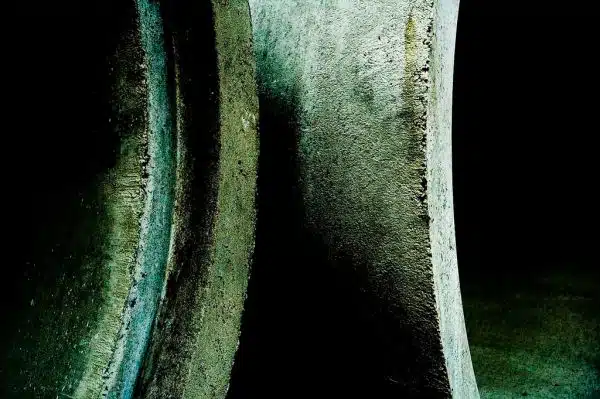




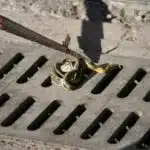




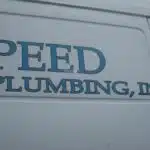


![How To Get Hair Out Of A Bathtub Drain 14 2/365 [Bathtub Drain]](https://green-life.blog/wp-content/uploads/2023/05/cOEu5edpkejq-150x150.jpg.webp)
